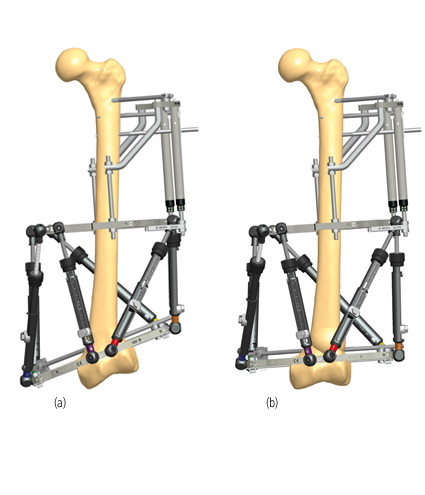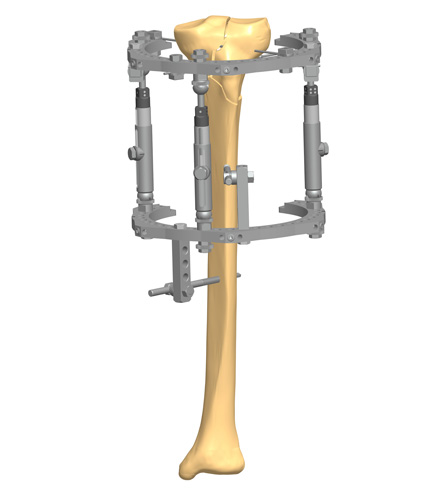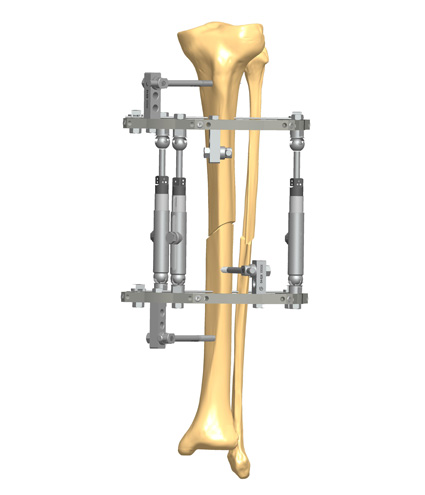Modern healthcare is taking orthopedic aftercare to the next level by ensuring a more personal touch to the patient, once they are released from their hospital stay. Going home after any minor or major surgery is a time of heightened anxiety and proper post-operative (post-op) care instructions and resources are key to ensure that the patient can benefit most from the treatment.
Mobile apps, designed for orthopedic surgery recovery, serve a unique personalized support system for the patient. By listing the post-op instructions and alerting the patient of any missed steps in a timely manner, they are successfully filling the gaps of traditional orthopedic aftercare with clever and efficient systems.
Patient Difficulties After Orthopedic Surgery
After an orthopedic surgery, a patient experiences the expected initial days of inflammation at the surgical site. Surgical dressings must be changed in a timely manner to avoid infections, weight bearing is kept to a minimal, and medications are required to be taken on time to allow the body to adapt to the new medical device. All of the above are attended to by the hospital staff in the first few days after surgery.
However, once the initial days at the hospital are completed, the patient is discharged and provided a list of instructions to follow when taking care of the surgical site at home.
There are many complications that may occur during the surgery aftercare such as:
- Infection at surgical site
- Incomplete wound healing
- Risk of blood clots
- Bleeding or bruising
- Stitch reaction or abscess
- Uncontrolled swelling
- Delayed bone union
- Sensory issues at surgical site
In order to best control or completely avoid the above conditions, appropriate patient/care-taker education and instruction are key. For more info on what to expect from an orthopedic surgery, visit www.limbhealing.com/care-after-surgery.
Appropriate aftercare4 includes:
- Preventing accidents
- Exercise and physical therapy
- Pin site care
- Adjustment to the fixator
- Incision care
Importance of Patient Compliance in Post-operative Care
Post-operative complications often lead to stress and anxiety in the patient’s surroundings. This often leads to:
- Unscheduled emergency visits
- Calls to surgeons’ offices
- Clinical readmissions
To control surgical complications and the burden it places on the patient as well as the healthcare system, methods to achieve remote orthopedic patient management are gaining traction.
One such means is the development of mobile apps geared towards efficient orthopedic aftercare.
Advantages of Remote Support Through a Mobile Health App
A mobile health app acts as a practical means to achieve orthopedic patient compliance. Overall, the goal of such a remote guide is to tackle key areas5-10 of post-op care which include:
- Patient’s education and satisfaction
- Improvement of clinical outcomes
- Increasing patient’s motivation which might lead to better outcomes
- Improved compliance and adherence
- Improve cost-effectiveness
One example of a mobile health app is the myHEXplan™ mobile app used for the TL-HEX device.
TL-HEX is a simplified deformity correction and trauma management device. It supports fracture fixation, limb lengthening, treatment of non-union and deformity corrections in long bones in both adult and pediatric patients. After a surgery where TL-HEX has been implanted, the patient is required to follow an aftercare routine such as ‘adjustments to the fixator’ or ‘pin site care’10. Lengthening too fast may cause problems with bone healing. Lengthening too slowly may result in the bone growing before lengthening is done.
How to adjust the length of the fixator frame along with the number of times a day the patient needs to do this can be guided by the myHEXplan app. In addition, the app can also guide how to clean the pin sites – that is, the area of skin around the pin or wire, where it passes through the skin.
The myHEXplan mobile app supports patients by providing access to their TL-HEX treatment(s) schedule and including educational material and insights.
By offering support from the first day after surgery up to the day of the device removal, through all the treatment phases, this app offers:
- Strut adjustment reminders
- Pin site reminders
- Mood self-assessment
- Insights to the treatment
By addressing both the physiological and psychological needs of a patient, post-op patient care mobile apps have brought modern healthcare a step closer to overall improvement of the patient’s quality of life whilst successfully improving the overall prognosis of these delicate, yet major, orthopedic surgeries.
To learn more about the myHEXplan, click the link here.
References
- https://www.tlhex.com/carehexcellence/#CareHexcellence
- https://www.lfaclinic.co.uk/patient-information/complications/
- https://orthofix.com/products/orthopedics-solutions/orthopedic-procedures/adult-limb-reconstruction/tl-hex/
- https://limbhealing.com/care-after-surgery/
- Chughtai M, Kelly JJ, Newman JM et al. The Role of Virtual Rehabilitation in Total and Unicompartmental Knee Arthroplasty. J Knee Surg. 2018 Mar 16.
- Lu K, Marino NE, Russell D et al. Use of Short Message Service and Smartphone Applications in the Management of Surgical Patients: A Systematic Review. Telemed J E Health. 2018 Jun;24(6):406-414.
- Danbjørg DB, Villadsen A, Gill E et al. Usage of an Exercise App in the Care for People with Osteoarthritis: User-Driven Exploratory Study. JMIR Mhealth Uhealth. 2018 Jan 11;6(1):e11.
- Semple JL, Sharpe S, Murnaghan ML et al. Using a Mobile App for Monitoring Post-Operative Quality of Recovery of Patients at Home: A Feasibility Study. JMIR Mhealth Uhealth. 2015 Feb 12;3(1):e18.
- Bitsaki M, Koutras G, Heep H et al. Cost-Effective Mobile-Based Healthcare System for Managing Total Joint Arthroplasty Follow-Up. Healthc Inform Res. 2017 Jan;23(1):67-73.










